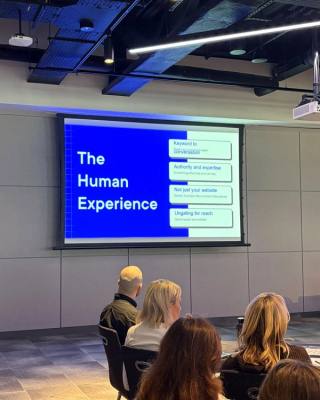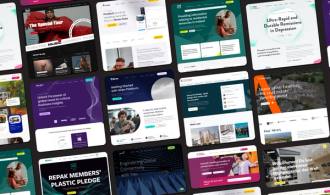Last week, our design team had the privilege of participating in the yearly Design Leaders Conference, hosted by IDI and Design Skillnet teams.
The location alone was a designer's dream. Held at the Light House Cinema, the Conference found the perfect balance of intimacy and innovation. The venue, with its state-of-the-art multimedia facilities, created an immersive experience for the presentations and workshops but even more than this, allowed for spontaneous interactions among participants, enhancing networking opportunities.
As you can imagine, having so many design visionaries and creative minds huddled in one room is a fantastic learning opportunity. What’s even better is that we were able to identify with them on challenges within the industry on topics such as leadership in our work, client interactions and effective team collaboration. We were able to explore and learn from some of the leaders and experts shaping the future of design and as you can imagine, came away with ideas flowing.
Taking a moment to look back on these inspo filled days, I wanted to share what really sparked my creativity and what I plan to bring into this year as a designer.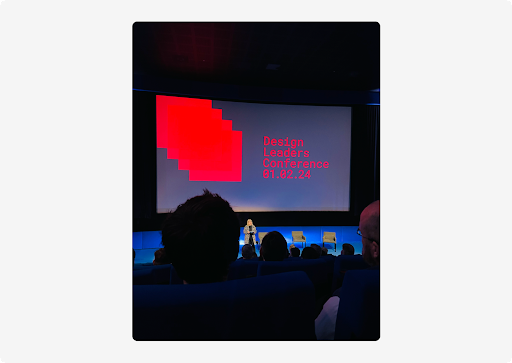
Conference Highlights
Rejane Dal Bello
The conference kicked off with a burst of creative energy from the acclaimed graphic designer, Rejane Dal Bello. Her artistic flair and captivating presentation instantly grabbed attention and really set the tone for the rest of the event.
Delving into themes of leadership, communication, and the role of design in addressing society's intricate needs, Rejane’s talk not only informed but also ignited contemplation. Weaving a narrative of personal anecdotes with professional insights, she cast a spotlight on the universal significance of creativity, driving home yet again that pivot role of design - it has the power to make or break a brand.
But Rajene’s talk wasn't all about aesthetics, she also underscored the positive impact design can have on society’s underrepresented causes and organisations. Her mantra, "Design through me, not for me," encapsulates the empowering essence of inclusive and participatory design, raising awareness for noble causes that may otherwise be overlooked. It was a powerful reminder of how transformative our field can be.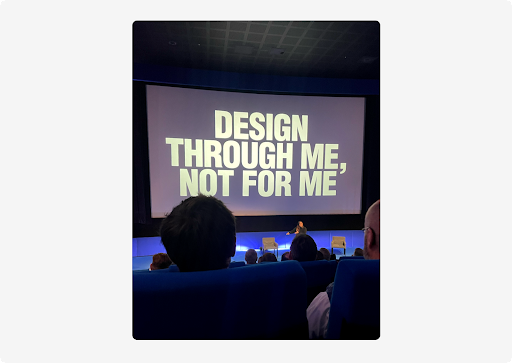
Richard Shotton
Following Rejane's captivating presentation, the stage welcomed Richard Shotton, an expert in blending design with the intriguing world of behavioural science.
In the talk that was equal parts entertaining and enlightening, Richard pulled back the curtain on the 'Hairy Arm' method in design, illustrating how intentional mistakes can engage decision-makers and facilitate smoother design approvals. Kind of mind blowing when we think about our constant journey for perfection when it comes to client approval!
Richard’s talk then transitioned into the EAST framework, which if you’re not familiar, is the brainchild of the Behavioural Insights Team (BIT), which serves as a sort of compass for government communicators navigating the intricate waters of behavioural science. The concept is comprised of four key principles — Easy, Attractive, Social and Timely. And these aren’t just abstract notions, but are genuinely powerful directives in task simplification, making desired behaviours more appealing, leveraging social influences and considering the timing of interventions to effectively influence behaviour. We couldn't help but think of how this will undoubtedly influence our approach to UX and how it can help strengthen our design process.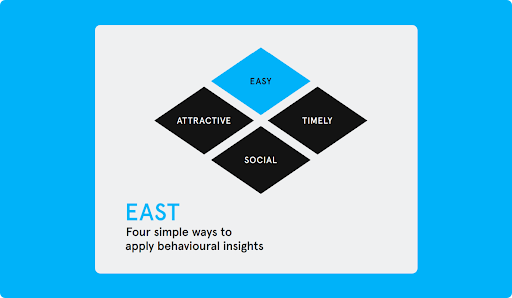
Tom Greever
Next up we had Tom Greever delving into the indispensable role of communication in design.
He spoke about how before our carefully crafted designs meet the eyes of users, they undergo a scrutinising gaze from client and stakeholders, all eager to decipher the rationale and ensure a worthwhile return on investment. Communication, as Tom illustrated, is the unsung hero in this process - bridging the gap, aligning visions and justifying design decisions. It’s the linchpin for fostering constructive feedback, managing expectations and steering clear of potential risks. This of course wasn’t a new concept for us, but it was definitely a testament to how pivotal words are in a design process.
Tom further highlighted three essential pillars of communication—Articulating, Processing and Aligning—forming a robust framework for effective communication, especially with audiences who may not be as fluent in design language.
As designers, articulating our visions verbally isn’t always our strong suit - hence why we’re in this profession - but it was inspiring to learn about practical tools and techniques that we can bring into our day-to-day flow to strengthen our communication skills.
Ade Chong
Lastly, a standout moment was Ade Chong's pragmatic and candid presentation detailing the establishment of her agency, Chong Studio.
What caught my attention was Ade's unique concept of flipping the script so to speak, by reversing the negative norms within the design industry from an agency perspective. She shared some interesting insights into alternative ways of approaching things, shedding light on the untapped benefits of remote work and the hidden gems that come with maintaining a nimble, small team. She offered a realistic and refreshing perspective on things that can sometimes seem a bit mundane.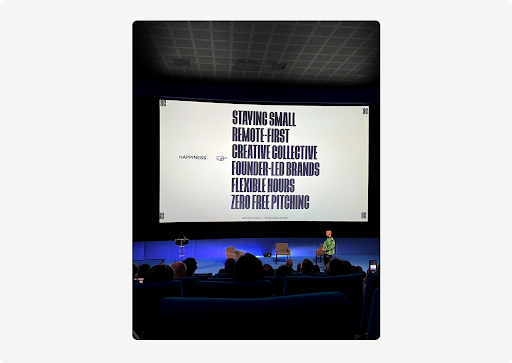
So with all of these insights, what’s our real takewary from the Design Leaders Conference? For me the conference provided a holistic view of the ever-evolving design landscape reminding me to never stop searching for my creative boost. Further to the presentations, it was an opportunity to connect with fellow attendees and seasoned professionals, and with this comes exposure to innovative ideas and down-to-earth applications inspiring me to elevate my own work.
Given we can get bogged down in the day-to-day of our work lives, the conference really was a breath of fresh air that re-energised my commitment to pushing creative boundaries.
Now let me put back on my blue light glasses and open Figma.


